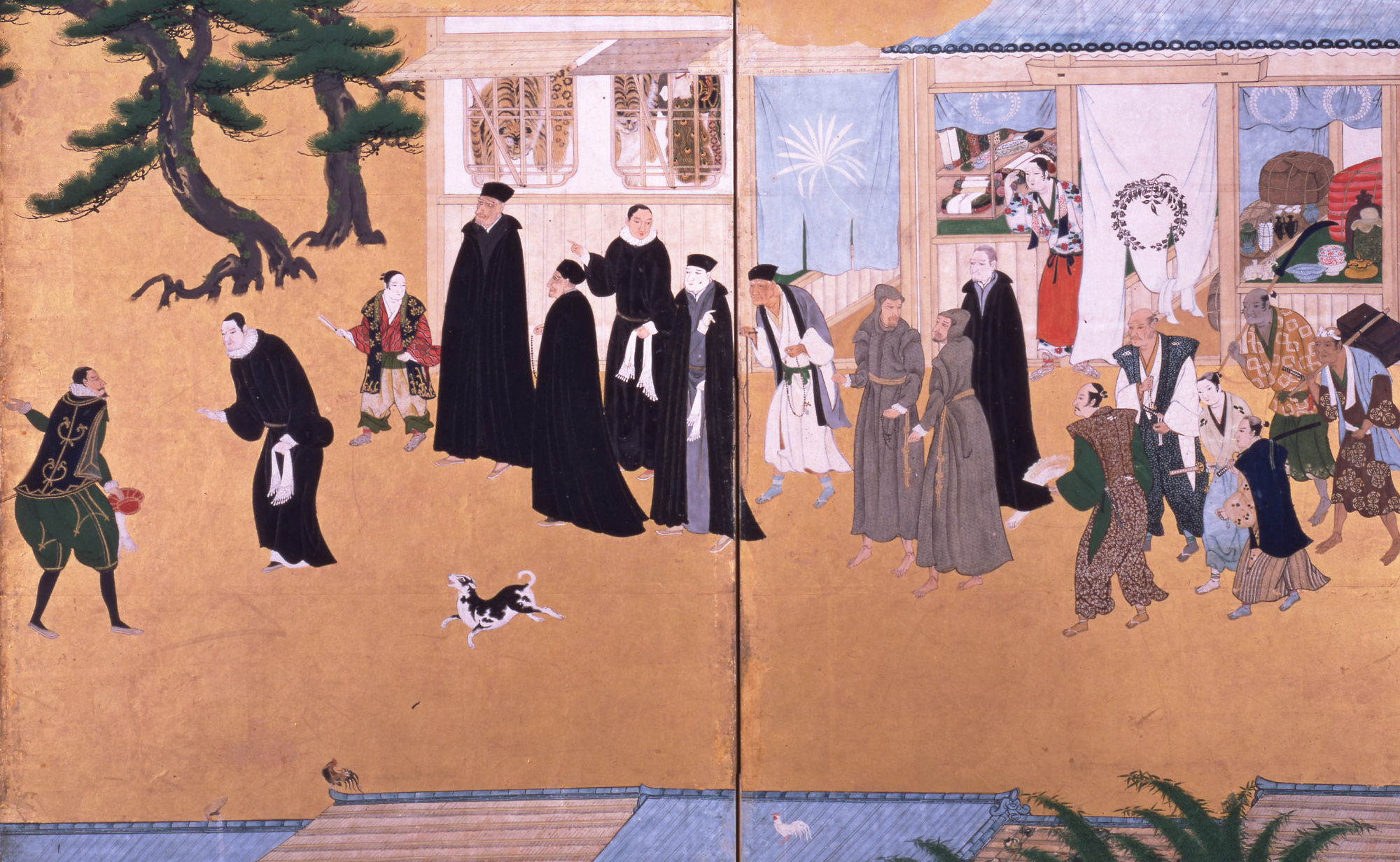
Fides no Quio is a treatise published by the printing house of the Jesuit Collegio in Nagasaki (1611). It was long lost until the moment its one remaining copy was rediscovered by Yoshimi ORII at the Houghton Library of Harvard University in 2009.
Fides no Quio turned out to be a Japanese translation of the first book of a very famous work, Introduccion del Simbolo de la Fe, composed by Dominican friar Luis de Granada (1504-1588) and published in Salamanca (1583). As its introduction suggests, this work was meant to reveal the unquestionable existence of the Creator God through the observation of nature’s order and beauty. Fides no Quio is the product of a painstaking effort to translate a treatise endowed with elaborate rhetoric by an author who was renowned as a “Spanish Cicero.”
Granada’s relationship with early Japanese Christian publications is prominent as several of his major works were translated. Martino Hara (1569–1629), one of the four young men who formed the Tensho embassy of 1582, is recognized as having overseen the translation of Fides no Quio. Martino met Granada in person when the embassy reached Lisbon. By the friendship with Cardinal Teotonio de Bragança (1530–1602), who supported the Jesuit mission in the East, Granada was greatly interested in the evangelization of Asia.
Fides no Quio awaits scholars from diverse horizons such as lexicography, Japanese linguistics, translation studies, the history of the book. From the point of view of intellectual history, it offers various insights, for example, into the Western doctrines of the soul. Indeed it refers to a Platonic interpretation which was in vogue in Italy and elsewhere under the influence of Florentine Platonism led by Marsilio Ficino (1433–1499). Such an aspect has not been recognized in other Japanese Christian texts of this era.
Although studies on early Japanese Christianity have often been conducted in terms of the reception of Western culture and civilization, Fides no Quio might also serve as a singular text which sheds fresh light on the complex intellectual scene of Europe itself.
Bibliography
1. Fides no Quio
1-1. Manuscripts
No known manuscripts.
1-2. Early Modern Editions
Houghton Library, Harvard University, shelf mark: Typ 684.11.435
The unique extant copy
2-1. Modern Editions
Yoshimi Orii et al. (ed.), Fides no Quio (Tokyo: Yagi Press, 2010) [in Japanese].
A facsimile reprint of the Harvard copy
Yoshimi Orii (ed.), Fides no Quio (Tokyo: Kyobunkan, 2011) [in Japanese].
A modern edition with introduction and commentary based on the Harvard copy
2-2. Studies
Yoshimi Orii, “The ‘Kirishitan’ Texts as a Bridge between the Counter-Reformation and Clandestine Christians in Japan,” in Early Japanese Christians and Publication, ed. Masayuki Toyoshima (Tokyo: Yagi Press, 2013), 169–191 [in Japanese].
Yoshimi Orii, “The Jesuit Conception of Soul in Japan’s Christian Century,” in The Microcosmos of Knowledge: Medieval and Renaissance Intellectual History, ed. Hiro Hirai and Minoru Ozawa (Tokyo: ChuoKoron, 2014), 332–361 [in Japanese].
